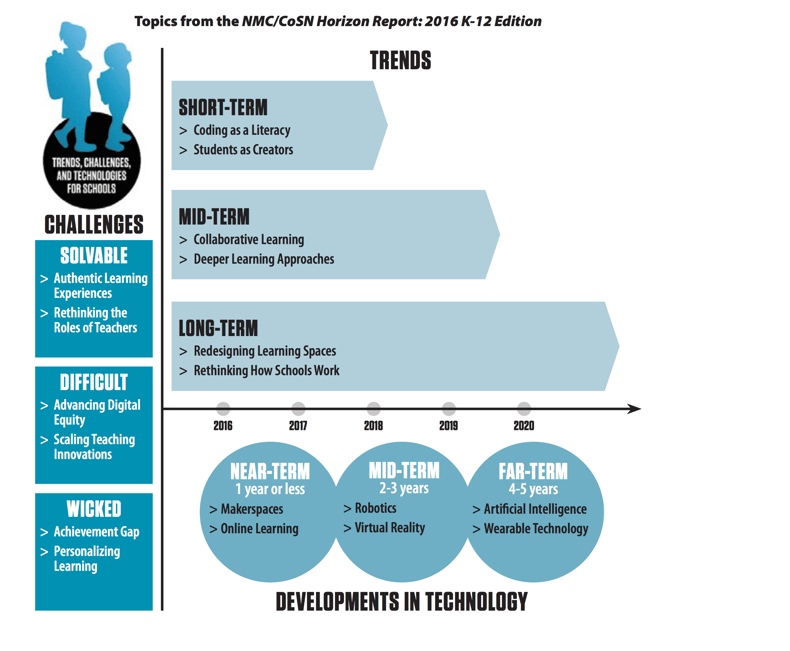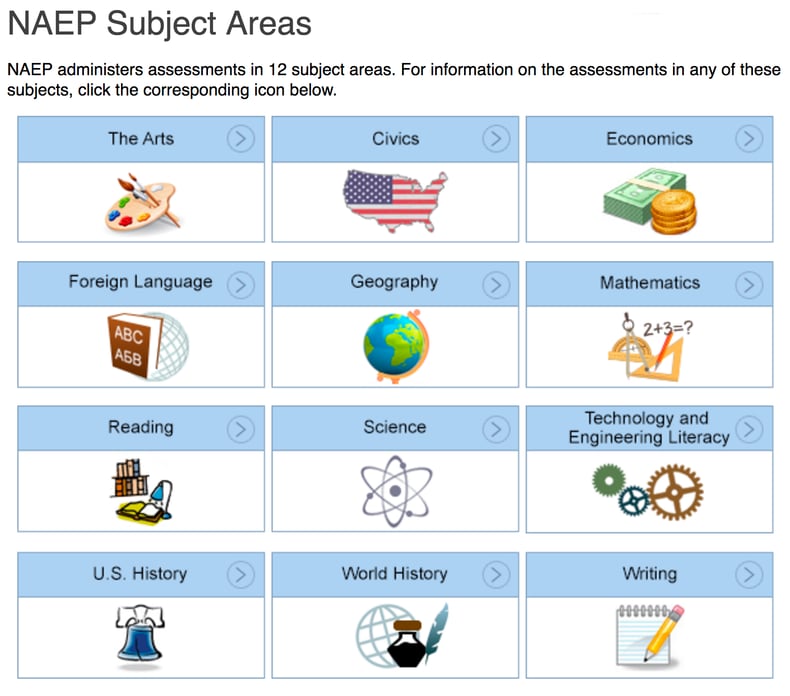
We thought it might be interesting to step back before we jump into a new year and see what numbers and statistics are indicating about various aspects of K-12 education. There’s no lack of resources in which to gather intelligence on the current state of everything K-12 from the National Assessment of Educational Progress—the largest nationally representative and continuing assessment of what America's students know and can do in various subject areas to State Education Reform results.
But by no means do the numbers tell the entire story. Share your thoughts below on what these resources and reports mean to you!
National Assessment of Educational Progress
The NAEP administers assessments in 12 subject areas. If you visit http://nces.ed.gov/nationsreportcard/subjectareas.aspx, you can obtain the assessment data in any of these subjects.
For example, click on the Technology and Engineering Literacy icon and you will learn that The Technology and Engineering Literacy (TEL) assessment measures whether students are able to apply technology and engineering skills to real-life situations. TEL is computer-based and uses interactive scenario-based tasks to gauge what students know and can do. The innovative tasks and results of the 2014 assessment are available now.
Click on the Science symbol and the results of the NAEP science assessment present a broad view of what our nation's students know and can do in science. The assessment is designed to measure students' knowledge and abilities in the areas of physical science, life science, and Earth and space sciences. There is some good news coming out of the 2015 assessments, which showed that science scores were trending up for 4th and 8th grade students, while 12th grade students’ scores were unchanged.
The Hamilton Project
In The Hamilton Project: A Dozen Economic Facts About K-12 Education, the authors connect the projects’ mission—advancing opportunity, prosperity, and growth to a broader conversation on how education has historically been the great equalizer, offering students of all backgrounds not the promise of equal outcomes, but the prospect of equal opportunity. The document presents some of the most important economic facts on the state of education in America. This study is rich with interesting details. In the first chapter, “Education Improves People’s Lives,” the authors share this: In 2009, almost half of the working-age population without a high school diploma were not employed. By contrast, 85% of college graduates had a job.
While in Chapter 2, “The U.S. is Losing Its Lead in Education,” the authors report that over the past three decades, average math and reading test scores of American 17-year-olds have been flat, while per-pupil spending has almost doubled. One way to change the trajectory in the authors’ minds: they believe that now, more than ever, there is an opportunity to harness new technologies and unleash these innovations in a more rapid timeframe in order to improve K-12 education outcomes. One idea they propose is the creation of a third-party ratings organization for educational technology to help schools make informed learning technology decisions and substantially reduce entry barriers for innovators.
EdTech Trends
And speaking of developments in technology, don’t miss the New Media Consortium (NMC) and the Consortium for School Networking (CoSN) annual review, which was released earlier this year.
Every year for the past 15 years, these organizations have been taking the pulse of where education technology stands among K-12 educators. A panel of 59 experts from 18 countries discuss major trends in education that are driving the adoption of technology, as well as the big challenges for effective implementation. This collaborative effort helps to paint a picture of where things stand now and where they might be going in the next few years. This year, NMC and CoSN have also put together a digital toolkit to help educators and policy leaders start conversations about these trends in their community, with the hope that some of the changes they see happening in pockets around the world will become more broadly accepted.
 One thing that caught our attention in the “Trends” section of the report is what they had to say about Collaborative Learning: In the next three to five years, experts see collaborative social learning as an important factor in what educators are trying to do with students. Teachers have long known learning is a social process—when students create meaning together, often the results are much more effective. The NMC/CoSN Horizon report highlights four principles of collaborative learning: “placing the learner at the center, emphasizing interaction, working in groups, and developing solutions to real-world problems.” Working in this way pushes students to create solutions, rather than passively consuming content, lectures, and lessons handed out by teachers.
One thing that caught our attention in the “Trends” section of the report is what they had to say about Collaborative Learning: In the next three to five years, experts see collaborative social learning as an important factor in what educators are trying to do with students. Teachers have long known learning is a social process—when students create meaning together, often the results are much more effective. The NMC/CoSN Horizon report highlights four principles of collaborative learning: “placing the learner at the center, emphasizing interaction, working in groups, and developing solutions to real-world problems.” Working in this way pushes students to create solutions, rather than passively consuming content, lectures, and lessons handed out by teachers.
And here at Boxlight, we couldn’t agree more! Collaborative and cooperative learning brings a deeper understanding to content and increases overall achievement, motivation, confidence, and teamwork skills. Be sure to check out our digital technology tools or download our free collaboration guide filled with activities for grades K-12.
Feel free to share your thoughts on future trends and important resources below!
Stay up to date in the year ahead on all things related to education and tech by subscribing to our Educator blog. Subscribe now.>>




